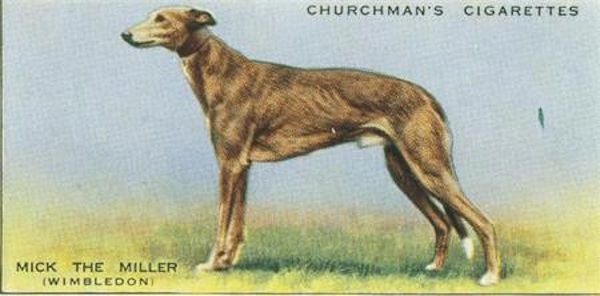The accomplishments of pioneers in any field serve as an inspiration and guidance for those who follow. Being the first is an honour coupled with great responsibility. Followers are fuelled by passion, aiming to catch up, surpass, enhance results, and drive the movement forward, providing momentum for the industry's development - that's how a legacy begins.
The renowned Irish greyhound, Mick Miller, stands as a pioneer in the realm of greyhound racing. Born on June 29, 1926, in Killy, an Irish village in County Offaly, at a time when greyhound racing was in its infancy in the UK, Mick, surprisingly, was the smallest in a litter of 10 puppies. Originally destined for greyhound racing in America, a twist of fate altered Mick's course. A tornado in America destroyed the kennel where Mick was supposed to go, prompting the owner to cancel the deal, and Mick remained in his homeland.
Mick Miller's racing journey commenced in Ireland, where he achieved victory in four consecutive races in 1928, including the Shelbourne Park National Derby (known as the Irish Greyhound Derby until 1931). Subsequently, Mick fell seriously ill with distemper, but thanks to the efforts of the Shelbourne Park doctor, he made a recovery.
Post-recovery, Mick's owner, Catholic priest Father Martin Brophy, brought him to Britain, where Mick continued his triumphant career. Notably, he became the first dog to secure back-to-back victories in the English Greyhound Derby in 1929 and 1930.
In 1929, he participated in 32 races, winning 26, and in 1930, he entered 23 races, winning 20. Mick set world records for running speed four times in one race, transforming from a "miracle dog" to "invincible" in the eyes of the public.
While Mick Miller didn't clinch the 1931 English Greyhound Derby, the races were so spectacular and dramatic that he became an icon in the world of greyhound racing. His retirement was announced in December 1931, marking the end of a short but illustrious sports career spanning about three years.
After retiring, Mick spent his later years at a stud farm in Norfolk, becoming the most expensive sire of offspring. At the opening of Catford Stadium in 1932, Mick Miller was invited as guest of honour. In 1934, the great greyhound racing star was featured in the film Wild Boy. The whole of Great Britain watched the film; a copy of it is kept at the British Film Institute. The dog was invited to store openings, attended races, and even became friends with members of the royal family
Following Mick's demise on May 6, 1939, his last owner, A. H. Kempton, donated his body to the Natural History Museum in London. Today, Mick Miller's stuffed form is displayed at the Tring Natural History Museum in a geometric showcase.
The legacy of the invincible Mick Miller lives on. A stand at Wimbledon bears his name, and figures and postcards with his image are produced. In 1981, he was inducted into the American Hall of Fame (International Section), and in 1990, a book titled "Mick Miller - Sports Icon of the Great Depression" was written by American author Michael Tanner.
In his hometown of Killy, a monument in honour of Mick was erected in 2011, unveiled by Irish Prime Minister Brian Cowan.
Mick Miller is not just a star of greyhound racing; he is a trailblazer, a pioneer, and a populariser of the sport. His runs attracted thousands, credited with essentially saving the sport of greyhound racing. A truly great dog.

